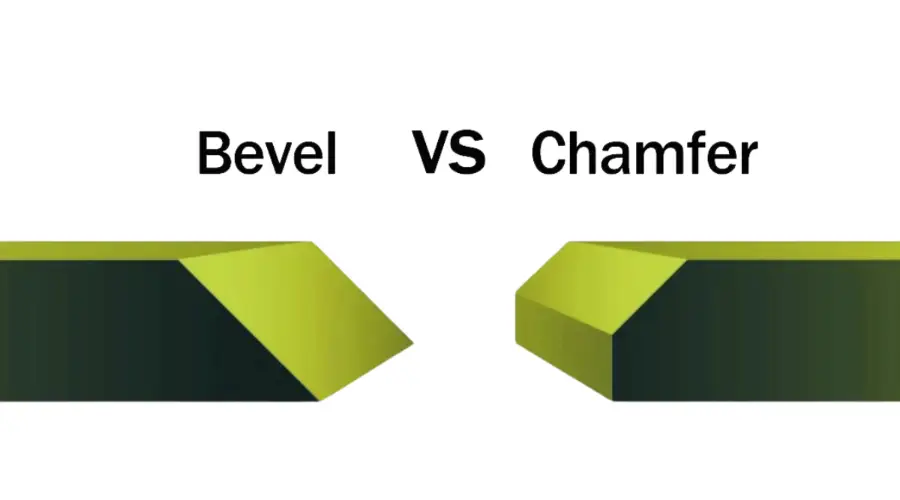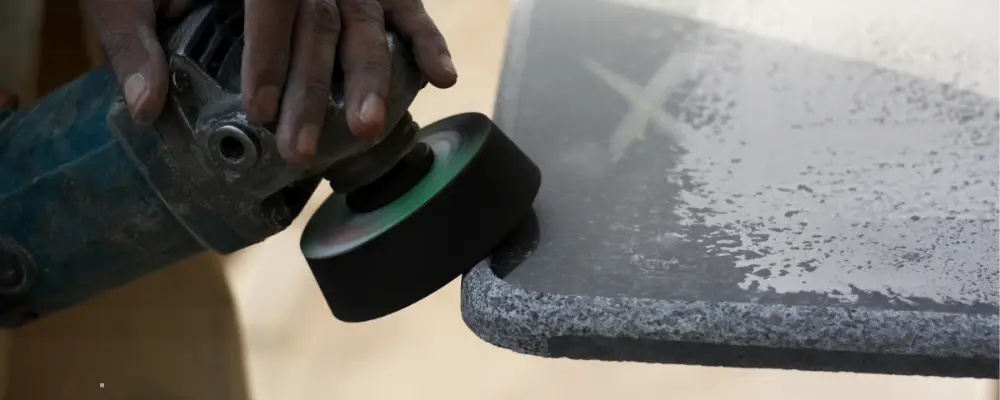Achieveing a precise, detailed, functional, durable, and elegant space in construction is essential. However, in most cases, people have to sacrifice between looks and functionality. That’s where beveling plays a major role, providing a perfect balance between the two. This blog explored what a bevel is in construction, types, importance, advantages, and applications.
What is a Bevel in Construction?
A bevel in construction refers to a sloped or angled surface that is created by cutting and grinding materials. It is generally applied to the edges using wood, metal, or concrete to make it a more functional and aesthetically pleasing surface.
Types of Bevels in Construction
Plain Bevel
It is the basic bevel type that is created by cutting an edge at an angle (other than 90 degrees) to the adjacent surface. This type of bevelled surface is highly durable and is most commonly used in carpentry applications, specifically at the edges of furniture, frames, or trim.
J-Prep Bevel
As the name suggests, this level has a J-shaped cross-section, and is typically used for butt welding two materials are joined along a straight line. This beveling type provides better penetration and strength in welded joints and provides a channel to accommodate welding materials more effectively.
J-Prep with Back Bevel
J-prep with a back bevel typically differs from J-prep, as it compliments both the J-prep and a back bevel to improve penetration and access. It provides strength, penetration, and load-bearing capacity, and is typically suitable for welding applications.
Compound Bevel
A compound bevel is a blend of two complimentary angle surfaces on each edge. This beveling is most commonly used in woodworking and metalworking applications, to make it more aesthetically appealing with complex shapes.
Compound J-prep with Back Bevel
It is another complex beveling process that combines compound, j-prep and back bevel, providing multiple angles and slopes. It improves the joining strength, penetration, and load-bearing capacity, making it suitable for welding applications to achieve desired shapes and dimensions, reducing the risk of stress or failure.
Applications of Bevels in Construction
Countertops and Surfaces
Bevel edges enhance the appearance of kitchen countertops with a sleek and modern look. They also help in reducing the risk of chipping, ensuring durability, and making it easy to maintain by facilitating water drainage and reducing dirt accumulation.
Doors and Windows
Bevel edges provide a polished look, making the door and window surface suitable for smoother operations and reducing the friction at the edges. The angled edges of doors and windows not only improved functionality but also improve the aesthetic look.
Flooring
Beveling the floor surfaces is most commonly used in laminating tiles or hardwood flooring. It creates an illusion of large spaces and helps hide minor imperfections in installation.
Furniture Design
Bevel edges are primarily engulfed into furniture designs to add more elegance and comfort. These edges are most commonly used in dining tables, coffee tables, cabinets, and other functional furniture applications, ensuring durability.
Welding
Bevel edges play a crucial role in welding applications, providing the necessary strength, larger bonding surfaces for joints, and improved structural applications.
Advantages of Bevel Edges
- Using bevel edges in construction reduces the stress in components by eliminating the sharp edges, reducing the risks of wear, tear, and other damages.
- beveling helps in the easy alignment of components, reducing the complex assembling of parts.
- It helps in deeper penetration and ensures better fusion and strong joints, making it suitable for high-quality and strong welding.
- The bevel edges enhance the overall design with a more modern and sleek look, making it suitable for both residential and commercial spaces.
- The angled edges enhance safety by reducing the risk of injury caused by sharpened edges.
- They reduce the occurrence of chipping and damage in glass and ceramics, thereby maintaining the structural integrity for a long time.
- Surfaces with bevel edges are easier to clean with improved water drainage and reduce the accumulation of dust and stains.
Considerations When Implementing Bevel Edges
Material Selection
The choice of material plays a major role in impacting the beveling process. Different materials react to the beveling method uniquely, affecting the durability and aesthetic quality. It is crucial to choose the right materials that are suitable for achieving the desired finish and application.
Angle of Bevel
Bevel angles vary from one structure to another, and it is essential to identify the appropriate bevel angle for the edges. A steeper angle improves visual appeal but affects durability. On the other hand, shallow angles are more durable but could affect the looks. Balancing both functionality and aesthetics is the key to having an effective design.
Cost Implications
The implementation of bevel edges could increase the overall costs due to the need for specialized materials, and labour. It is essential to allocate the budget accordingly for the beveling proces.
Machine Capabilities
The machines used for implementing beveling should have proper spacing to cover the entire beveling edges, to ensure error-free and delay-free work. Any limitations in machinery or spacings inadequate for beveling affect the quality and functionality of the surface.
What is the Difference Between Bevel and Chamfer?

| Bevel | Chamfer |
| A bevel is a sloped or angled edge that cuts the corner of a material at a varying sloppy angle, other than 90 degrees. | Chamfer is a type of bevel cut that has a straight and uniform cut, most commonly at a 45-degree angle. |
| The main purpose of implementing beveling is to join materials and improve strength and aesthetics. | The main purpose of using chamfer is to enhance safety, easy assemby, and serve decorative purposes. |
| It is most commonly used in carpentry, welding, stair treads, and trimming works. | It is primarily used for metalworking, furniture, and shaping door and window frames. |
| Beveling edges are sloping and gradual in angle. | Chamfer edges are straight and uniform in angle. |
How to Create Bevel Edges?
For Woods
- A table saw or mitre saw is used to create the required bevel angle in wood.
- Adjust the blade of the table saw at an appropriate angle, based on the requirements.
- Place the wood horizontally on the table and feed it into the saw to cut the desired angle.
- After cutting the edges, a power sander or hand planer is used to smoothen the surface.
- If needed, wood stain and varnish can be applied to protect the surface and provide aesthetic looks.
For Stone and Tile
- Mark the angle that needs to be cut on the stone or tile surface.
- An angle grinder with a diamond blade or hammer and chisel can be used to cut the required angle carefully.
- Polishing pads can be used to achieve a smoother and elegant-looking surface.
For Glass
- A glass beveling machine or a specialised hand tool can be used to cut the bevel glass piece.
- Carefully set the glass piece in the machine and adjust the angle of the runner appropriately.
- Feed the glass edge through the machine to create a smooth bevel without causing any chips or cracks.
Conclusion
Beveling is a crucial concept in construction that provides an angled, smooth surface. It gives a blend of elegance and functionality by using various materials and settings. It enhances the safety, durability, and aesthetics of the space, and is used for a variety of applications, from kitchen countertops and floorings to furniture, doors and window surfaces.

